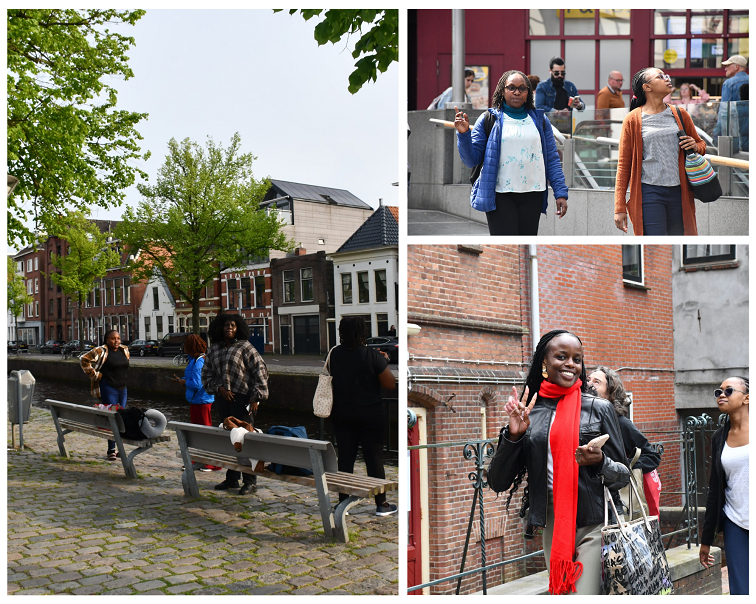
Staff and students exploring Groningen City
It’s the night before and you can hardly sleep. Your packed bags watch you from the corner, and you stare back trying to remember if you forgot anything. You run through a mental list of everything you want to get done before it is time; time to grab the packed bags and your passport and catch a flight to Europe. Perhaps thoughts of the upcoming trip invade your dreams when you eventually drift off; perhaps they invaded the dreams of the School of Humanities students the night before they were set to fly to the Netherlands for the annual academic trip.
The long awaited day had finally arrived. On a Saturday afternoon, over 40 students gathered on campus, suitcases in hand, ready to embark on a journey to JKIA. The parents who were there bade them farewell, as did the chaplain who prayed journey mercies over the group, and they were off. The usual hectic buzz of the airport was ringing in their ears as they checked in their luggage, went through security and settled in to wait for their boarding time. A five-hour flight to Dubai, four hour layover, and six-hour flight to Amsterdam later, the group landed, checked out of the airport and started the drive to Groningen where they would be living and learning for the next few days.
Groningen is a city in the Northern region of the Netherlands. Established 950 years ago, the city’s charm is in the cobblestone streets, floating boat houses that line the canal, and old brick buildings. The city’s skyline is marked with tall towers, whose bells can be heard ringing across the city. Walking through the city takes you back in time, and the idealistic little cafes call to you to come in and have a cup of coffee by the window as you watch city life go by. Though it’s easy to get lost in the architecture as you stroll along, you must always watch out for the cyclists, which is basically every local to the area.
After a well deserved night’s rest, the students kicked off their itinerary early on a Monday morning. The day was spent at the University of Groningen. Adding the academic to academic trip, the team at the University took the students through a day of learning, starting with a session on understanding the Dutch. It gave the students insights into the peculiarities characteristic of the Dutch people. The session was aptly followed up with a lesson on Dutch. At the end, the students were introducing themselves in Dutch, and singing the popular children’s rhyme “Hoofd – Schouders – Knie en Teen”. At this point, they were practically locals and ready to go out and explore Groningen. And explore they did. A guided tour through the city allowed them to take in the history of Groningen and its people, dating back centuries. From old libraries to cathedrals, down narrow streets and through luscious green parks, the city tour was one to remember.
To wrap up an action-packed first day, the students had an interactive joint lecture with the students of the University of Groningen’s Network of Humanitarian Aid (NOHA); an inter-university, multidisciplinary Joint Master’s Degree in International Humanitarian Action. Together with the SHSS students, they discussed the issue of decolonizing humanitarian aid, coming up with innovative and actionable solutions. The session opened the students’ eyes to some of the options they have available to them beyond their undergraduate degree. This was particularly relevant as the group was made up of International Studies students and Communication and Development Studies students.
The academic sessions at the University of Groningen continued into the morning of the second day with lectures on ‘Cultural entrepreneurship and international collaboration in Africa’ and ‘Rural Social Engineering during decolonisation’. Once again, the topics had been curated to cater to the interest of the students based on their fields of interest. At the University of Groningen, and throughout the visit, as is the Strathmore fashion, there were gifts for the lecturers and organizers of each session to express gratitude that is a hallmark of African cultures.
Afternoons in Groningen were spent exploring the nearby area, shopping and enjoying the many cafes. The bold enough tried the scream-inducing carnival rides. With the sun setting past 8pm, the days were longer, giving everyone more time to wander through the city streets.
As the stay in the Netherlands drew to a close, the group had the opportunity to visit a historical site that is a hallmark site of the second world war. During WWII, Camp Westerbork was known as ‘the gateway to Hell’. It was a transit camp to concentration camps like Auschwitz and Sobibor. However, the camp, built in 1939, was first used as a refugee camp for Jews fleeing from Germany and Austria. Now it serves as a place of remembrance such that we may never repeat history’s mistakes.
Having done everything they had set out to do in Groningen, the School of Humanities group boarded a bus to Brussels. The 5-hour bus ride across the border into Belgium was an experience of its own, as they got to see the famous windmills of Holland, and the green marshlands gradually change into the concrete sidewalks of the city.
The welcome into Brussels was a quick one, as the students checked into their rooms and promptly got settled for a session by representatives of the World Youth Organization (WYA). What’s interesting is, the Law School students had been in the same room, having the same session just earlier that day. Two academic trips crossing each other across European borders like two ships passing in the night. Both groups got to hear about the mission of WYA and were invited to participate, as volunteers and even interns, in promoting the alliance’s vision of human dignity for all. After dinner, the students headed to bed for a well deserved night of rest before jumping into an exciting few days in Brussels.
Friday the 19th, the group’s first full day in Brussels, coincided with a national public holiday in celebration of the feast of The Assumption. Luckily enough, Jean-Michel Willems and Paul Nchu, who had had a wonderful visit to Strathmore just the year before, were more than willing to host the students at their university; Thomas More University of Applied Sciences. As early as 10am on a public holiday, they were receiving the students at their campus in Mechelen, where they had prepared a session to introduce them to Belgium and the university. While there, the students were able to hear a first hand account from a Kenyan living and studying in Belgium, undertaking a Postgraduate Programme in African Business Studies. By the end of the session, one student noted her new-found interest to explore the one year programme before furthering her studies in China.
The rest of the day was spent exploring the cities of Mechelen and Antwerp. The cobblestone streets were reminiscent of Groningen, with the same towering spires mingling with the modern architecture. They got to visit the chocolate museum, eager to taste for themselves the world renowned Belgian chocolate and see the Antwerpen Centraal train station, whose current terminal station building was constructed between 1895 and 1905.
The experience throughout the trip was an interesting merging of old and new, traditional and modern. McDonalds in a brick building, and electric scooters through cobblestone alleyways. On the second day of their stay in Brussels, the students stepped back in time, way back – to 15th century Flanders, a region to the north of Belgium. They visited the Kasteel Hoensbroek and got to see how the Lords of the house lived through the 15th, 16th and 17th centuries. The tour guides themselves were dressed as residents of the household would have been dressed in their time. Beautifully preserved, the castle told stories of the days of old. Those who were worried were assured that the castle was probably not haunted, though some sightings of the Blue Lady had been made.
The rest of the stay in Brussels saw the students visit the House of European History and the Parlamentarium. Finally, as the trip was coming to a close, the group visited the offices of the European Union and got to hear a session on the Union and the potential areas of collaboration with the African Union.
Some last minute exploration and frantic shopping later, the group was ready to say goodbye to Belgium, and Europe. With a mix of reluctance to end the trip and excitement to return home, they boarded their flights and made their way back to Nairobi.
This article was written by Celia Kinuthia.
What’s your story? We’d like to hear it. Contact us via communications@strathmore.edu











